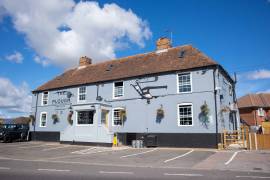The mysterious birth of lager
What precisely is lager? It may seem a curious question to ask, as most of the world drinks lager. Even in Britain, with its great ale heritage, lager now accounts for around half the beer consumed here.
But confusion and even a touch of mystery surround a beer style that most British drinkers consider to be German in origin. In fact, the first golden lager was brewed not in Germany but in neighbouring Bohemia, in the city of Pilsen, which gave its name to a style known as Pilsener or Pils for short.
Pilsener was first brewed in 1842 and many people assume that is the date of origin for lager brewing. In fact, dark lagers had been brewed for some time in neighbouring Bavaria, centred on the great brewing city of Munich.
Nevertheless, lager is generally considered to be a product of the industrial revolution, when ice-making machines and refrigeration allowed brewers to store - lager in German - beers at low temperatures. One of the major works on beer making, a History of Brewing by HS Corran, says that some brewers in Germany had stored beers in caves since the 15th century. But Corran, in common with most historians, puts the widespread development of lager brewing firmly in the 19th century with the invention of ice-making machines.
A visit to Germany and to its Bavarian brewing heartland convinces me we need to look afresh at the origins of lager. In the great city of Nuremberg I went to the Altstadthof Brewery, which means the Old Town Brewery. It has been producing beer since 1386 and when I asked the present owner, Reinhard Engel, if for most of that time it had made ales - probably wheat beers - by warm fermentation he looked surprised and said no, the beers would have been lagered.
I got the same response in the legendary brewing city of Bamberg, a short distance from Nuremberg. Bamberg has 10 breweries. It once had dozens. At one time, every other house seems to have made beer, often sharing communal brewing vessels. The best known of the Bamberg breweries is Heller, which has been brewing since 1678. I asked the same question of the owner Matthias Trum and he looked puzzled and ushered me down to the cool cellars beneath the brewery. In common with Reinhard Engel, Trum told me that his family's beers had always been stored in the cellars. The reasons are simple: the summers in central Europe are extremely hot and beer would go sour from wild yeast infections if they were left to mature on the surface.
Central Europe also has an abundance of mountains and hills. Bamberg is built on seven hills and centuries ago the citizens dug out the sandstone rock to build homes and their cathedral. The cellars left behind were used by local brewers to store their beers.
The same is true in Nuremberg where there is a labyrinth of 600-year-old cellars beneath the city, used to store food, drink and other perishables before the arrival of refrigeration.
To keep temperatures low, brewers would cut ice in winter from lakes and rivers and place it in ice rooms above the lager cellars. They noticed that beer stored in this way not only kept free from infection but also fermented and matured more slowly.
Centuries before the first golden lager appeared in Pilsen, brewers in central Europe had, by accident rather than design, invented a system known as "bottom fermentation", in which yeast works slowly at low temperatures and eventually sinks to the bottom of the brewing vessel.
The English went on brewing ale as a result of insularity - we were cut off from mainland Europe by geography and regular wars - pride in our own brewing traditions... and a lack of mountains and ice. Burton-on-Trent is famous for its brewing water and, in common with Nuremberg, Bamberg and Pilsen, has sandstone rock in abundance. But if you attempted to cut cellars below the breweries in Burton they would immediately fill with water from the Trent Valley.
It would seem that the presence of mountains and ice fashioned a beer style many centuries before Pilsen puts its stamp on the world. Beer is never boring.
www.beer-pages.com















